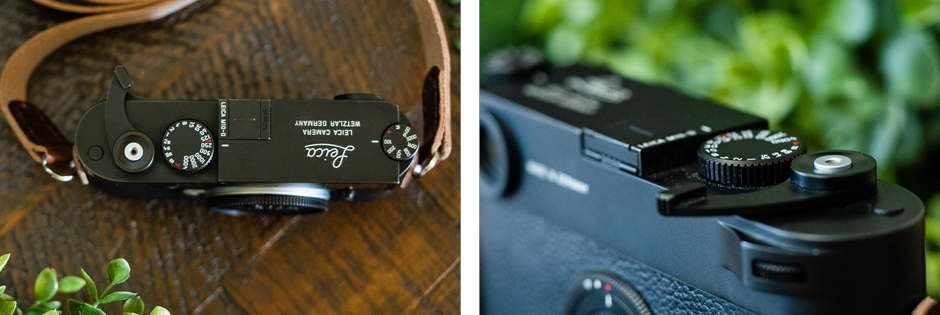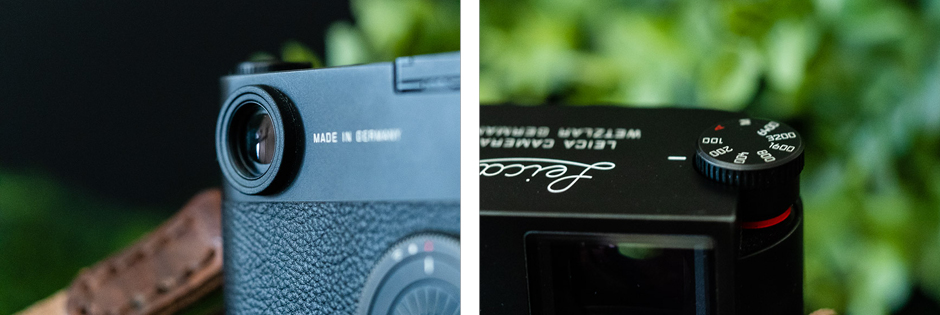So I did a thing. Recently photography has reignited itself as an outlet for me to escape the graphic design mindset. It’s a chance to slow things down and forget about all the technical aspects that come with being a full-time creative. But several things still bothered me; modern photography felt very similar to the things I wanted to escape. Every modern camera is loaded with features; deep menus, function buttons on top of function buttons, and focusing systems that seemingly do the work for you….I didn’t want any of it. The convince of modern features can sometimes get in the way. Which is why a went out and purchased a system that to me is the perfect representation of what the photography experience should be.
The Leica M10-D was a camera that I’ve been eyeing ever since it was released but never pulled the trigger on purchasing it. While it is sexy as a mother; realistically you can turn any camera into a screenless system by either flipping the rear LCD or turning it off. On paper it’s literally just a M10-P without a screen. So why then would anyone go out an buy a $8000 camera (body only) whose main selling point my current system allows me do for less than 1/4 the price.
Specifications
LENS-MOUNT | Leica M
WEIGHT | 1.45lbs (660g)
DIMENSIONS | 5.47″ x 1.5″ x 3.15″
SENSOR | CMOS (23.9 x 35.8 mm)
SENSOR RESOLUTION | 24mp
ISO RANGE | 100 – 50000
SHUTTER | 8s – 1/4000s
FRAMES PER SECOND | 5
Build Quality
What else can you say other than “it’s a Leica”. Once you grab of hold of the camera you will immediately feel how robust it is. A lot of cameras of similar size tend to have a plastic feeling, but not this one. This camera will outlive the owner. The Leica M10-D has the same timeless design as all the other M cameras that came before it. Leica’s approach is if it ain’t broke don’t fix it, & it makes since with this line of cameras.


The little details
The main feature (or lack thereof) is that there is no LCD screen on that back of the camera. It’s not really that odd if you shoot film or don’t look at you LCD often on another camera. But in all honesty it’s not that big of a deal. The light meter in the camera is fairly accurate, and just to be safe I set mine to underexpose by 1 stop. For focusing the rangefinder patch is nice and bright so with practice you should have the confidence to get tack sharp images. The main benefit I found was that there wasn’t a time where I missed the screen.
Walking around DC there was something relaxing about just zoning out, not worrying about “did i catch that”. It was more of a keep it moving mentality. It helped train the eye to be on the lookout for potential moments. For scenes where I wanted to put more thought into the composition, just set up, grab focus and wait…the type of camera I was using wouldn’t have made much of a difference.
If you feel like you really need to preview your images there are two options. The camera has wifi built in so that you can connect to you photo via the Leica camera app. The app is very intuitive, allowing you to no along view you images but adjust your setting and act as a remote shutter. One thing to note is that the only way to adjust you white balance on this camera is through the app. You have the option to purchase a visoflex which is just a EVF that you can place on the hot shoe to get a live preview. This works great because you are able to magnify the image to get pinpoint accuracy especially on longer lens.


The addition of the film advance lever is an interesting detail. There’s something oddly satisfying about playing with this thing. It serves as a nice thumb rest to improve the handling of the camera, & frees up the hot shoe which usually has a third party thumb rest. As silly as it sounds I wish it also served as an actual film advance lever, having to re-cock the shutter after each shot like you would a film camera.
The ISO dial on the M10’s has been moved to the top where the old film review levers use to be. It’s nice and stiff but at times the fact that you have to lift it up to change your ISO can be a bit annoying. For the most part it’s not a big deal. You never have to worry about accidentally changing your setting.
The last thing that might get overlooked but it HELLA satisfying is the shutter. It’s not just that it is extremely quiet, but every time you take a photo it has a certain pop to it.
Image Quality
The Leica M10-D uses the same 24-megapixel sensor as the M10 & M10-P. Nothing much to really to add. The files are more than enough for both print and web viewing. The DNG files give you a wide range of flexibility in post processing. The way the colours render on the sensor in combination with a leica lens or even third party lenses like voigtlander or zeiss is spectacular.

Overall:
Pros:
- Elegant Design
- Built to outlast the owner
- Image Quality is fantastic
- Lightweight body with a full frame sensor
- All manual controls
Cons:
- Like everything Leica it is expensive as a mother
- No LCD = Steep learning curve
- Accessories are absurdly priced
- Battery life if you’re using wifi is meh
- You can’t easily adjust some key setting like WB without using the app
- May need to be sent to Germany for most repairs
Look, is the price justified? Fcuk no.
The Leica M10-D is a niche product within an already niche ecosystem. Understanding that because of this system you WILL miss shots, even some “perfect moments”…But that’s the point, if you miss a moment then it’s all on your ability, and also, when you nail a shot it’s all on you. This camera serves as a escape from my fast pace workstyle and continuous source of inspiration. Given that, it’s hard to put a value on it.




